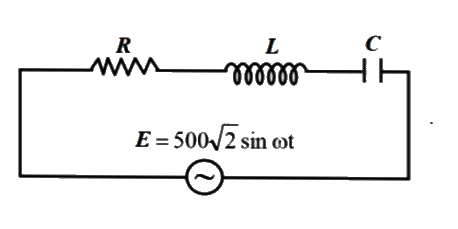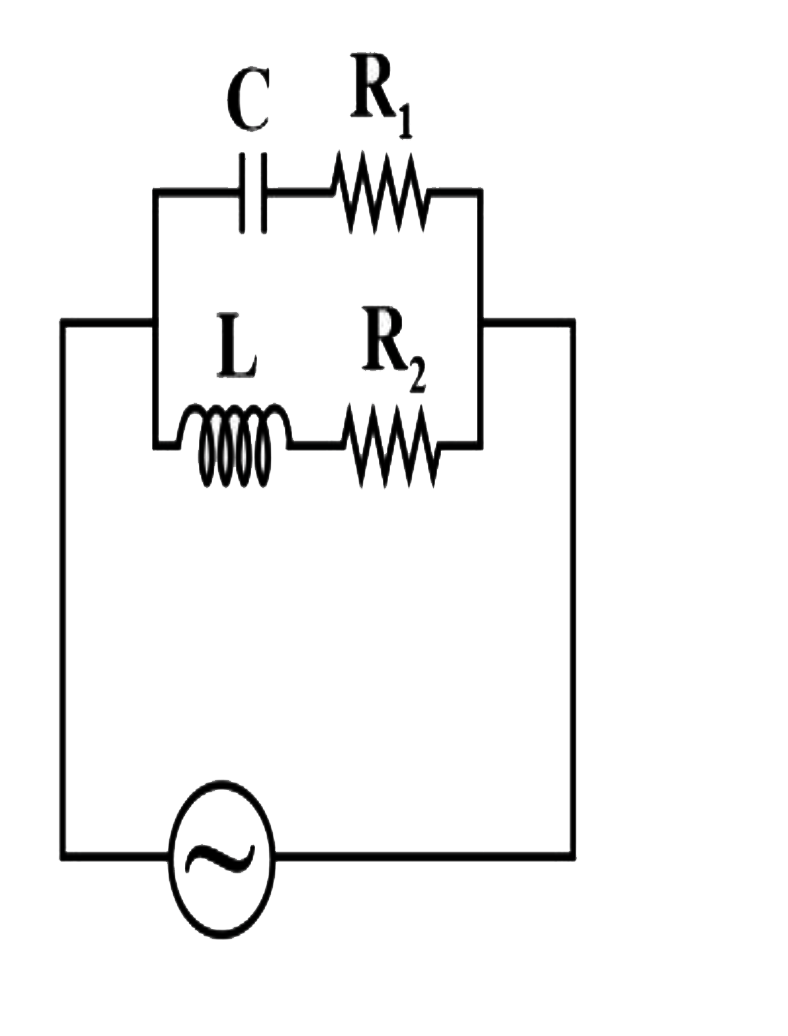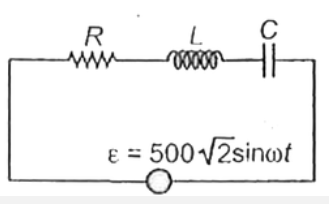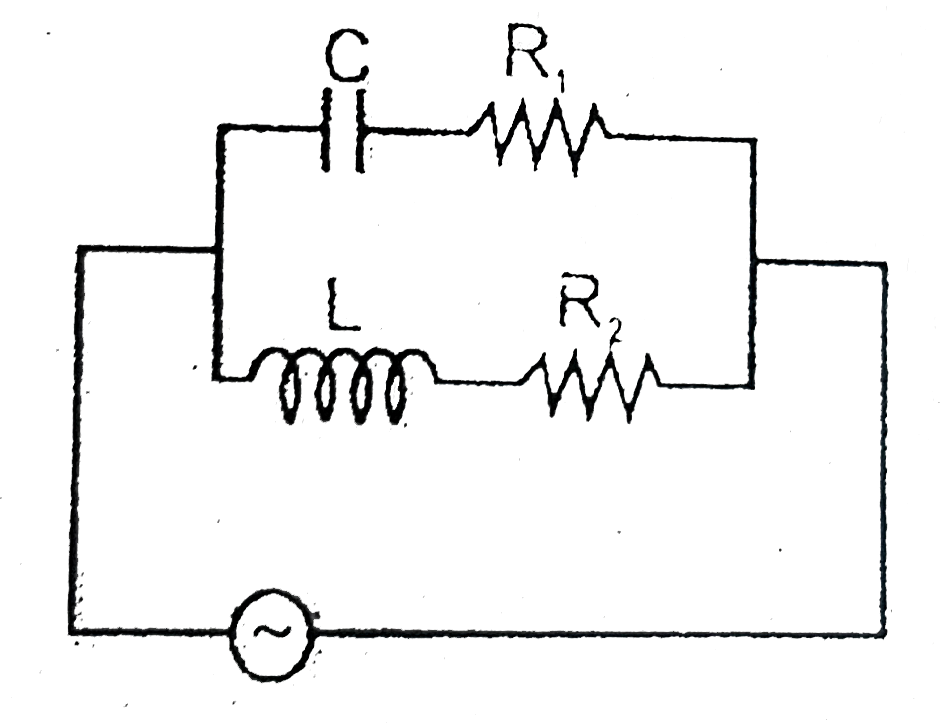An AC voltage is applied acrss a series combination of L and R. If the voltage drop across the resistor and inductor are 20V and 15V respectiely, then applied peak voltage is
25V
35V
25√2V
5√7V
The correct Answer is:C
To find the applied peak voltage across a series combination of an inductor (L) and a resistor (R) when given the voltage drops across each component, we can follow these steps:
1. Identify the given values:
- Voltage drop across the resistor, VR=20V
- Voltage drop across the inductor, VL=15V
2. Calculate the total voltage (RMS voltage) using the Pythagorean theorem:
- In a series circuit, the total voltage (RMS voltage) can be calculated as:
Vrms=√V2R+V2L
- Substitute the known values:
Vrms=√(20)2+(15)2=√400+225=√625=25V
3. Convert RMS voltage to peak voltage:
- The relationship between RMS voltage and peak voltage is given by:
Vpeak=Vrms×√2
- Substitute the calculated RMS voltage:
Vpeak=25×√2V
4. Final answer:
- Therefore, the applied peak voltage is:
Vpeak=25√2V
Summary:
The applied peak voltage across the series combination of the inductor and resistor is 25√2V.
- Voltage drop across the resistor, VR=20V
- Voltage drop across the inductor, VL=15V
- In a series circuit, the total voltage (RMS voltage) can be calculated as:
Vrms=√V2R+V2L
- Substitute the known values:
Vrms=√(20)2+(15)2=√400+225=√625=25V
- The relationship between RMS voltage and peak voltage is given by:
Vpeak=Vrms×√2
- Substitute the calculated RMS voltage:
Vpeak=25×√2V
- Therefore, the applied peak voltage is:
Vpeak=25√2V
The applied peak voltage across the series combination of the inductor and resistor is 25√2V.
Topper's Solved these Questions
- BOOK - DC PANDEY ENGLISHCHAPTER - ALTERNATING CURRENTEXERCISE - Level - 1 Subjective6videos
ALTERNATING CURRENT
- BOOK - DC PANDEY ENGLISHCHAPTER - ALTERNATING CURRENTEXERCISE - Level- 2 Single Correct18videos
ALTERNATING CURRENT
- BOOK - DC PANDEY ENGLISHCHAPTER - ALTERNATING CURRENTEXERCISE - Level 1 Assertion-Reason11videos
ALTERNATING CURRENT
- BOOK - DC PANDEY ENGLISHCHAPTER - ATOMSEXERCISE - MEDICAL ENTRANCES GALLERY42videos
ATOMS
Similar Questions
In the series L−C−R circuit shown in the figure, the rms voltage across the resistor and inductor are 400 V and 700 V respectively. If the applied voltage is E=500√2sin(ωt), then the peak voltage across the capacitor is
 View Solution
View SolutionAn alternating voltage is connected in series with a resistance R and inductance L if the potential drop across the resistance is 200V and across the inductance is 150V, then the applied voltage is
View SolutionIn the given circuit the R.M.S values of voltages across the capacitor C, inductor L and resistor R1 are 12V, 10V and 5 V respectively. Then the peak voltage across R2 is
 View Solution
View SolutionA resistor and a capacitor are connected in series with an a.c. source. If the potential drop across the capacitor is 5 V and that across resistor is 12 V, applied voltage is
View SolutionA sinusoidal voltage Vsin(at) is applied across a series combination of resistance R and inductor L. The amplitude of the current in the circuit is
View SolutionIn a series resonant circuit, the ac, voltage across resistance R, inductance L and capacitance are 5V, 10V and 10V, respectively. The ac. voltage applied to the circuit will be
View SolutionIn an LCR series ac circuit the voltage across L,C and R are V1,V2 and V3 respectively The voltage of the source is .
View SolutionIn a series RLC circuit the r.m.s. voltage across the resistor and the inductor are respectively 400 V and 700 V. If the equation for the applied Voltage is ε=500√2sinωt. then the peak voltage across the capacitor is
 View Solution
View SolutionIn the circuit the rms value of voltage across the capacitor C, inductor L and resister R1 are respectively 5√5V, 10 V and 5V. Then the peak voltage a cross R2 is
 View Solution
View SolutionA constant voltage of 25 V is applied to a series L-R circuit at t = 0, by closing a switch. What is the potential difference across the resistor and the inductor at time t = 0?
View Solution

